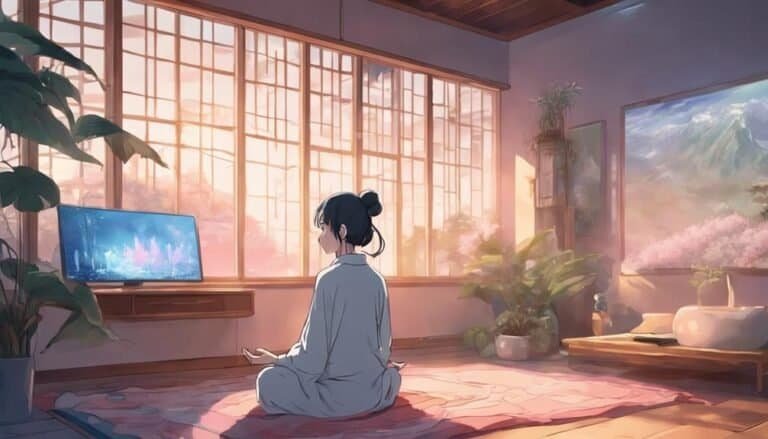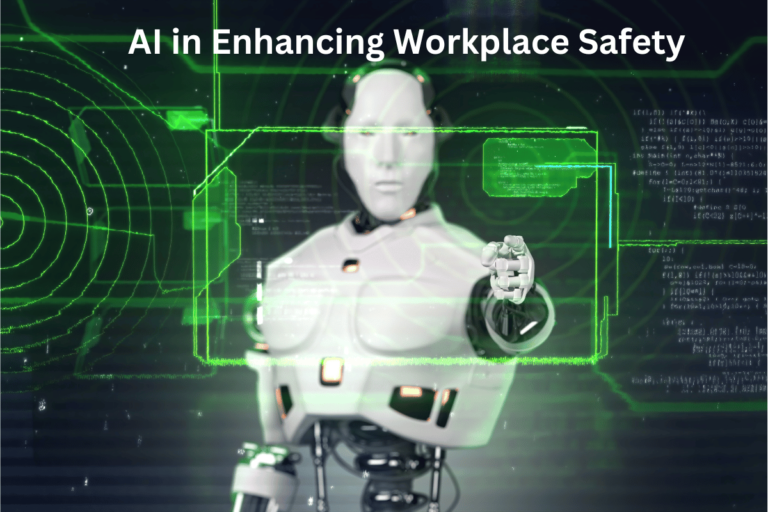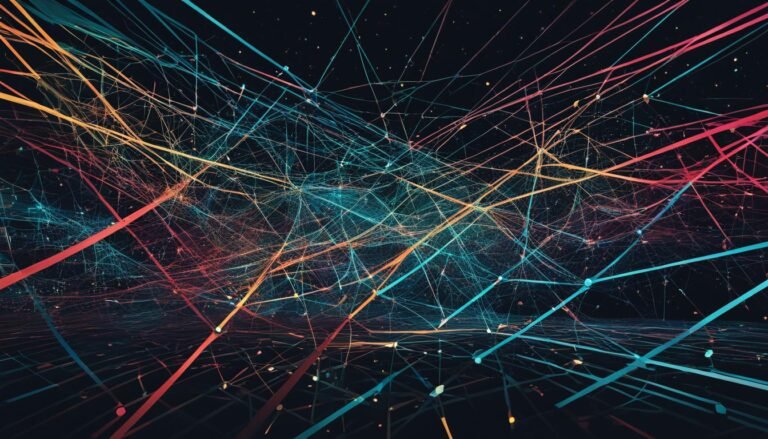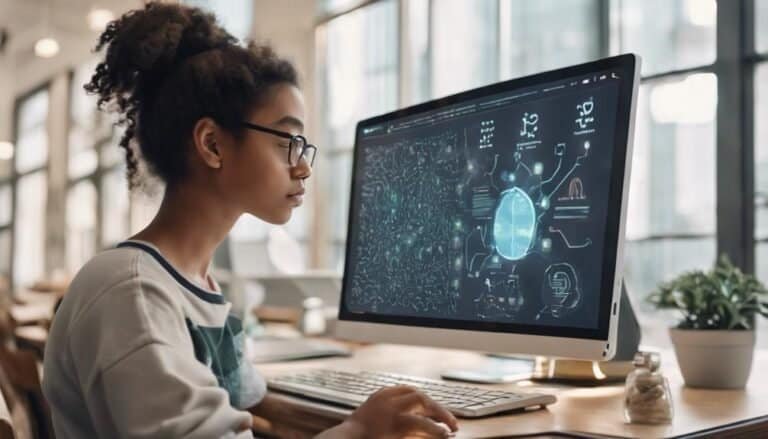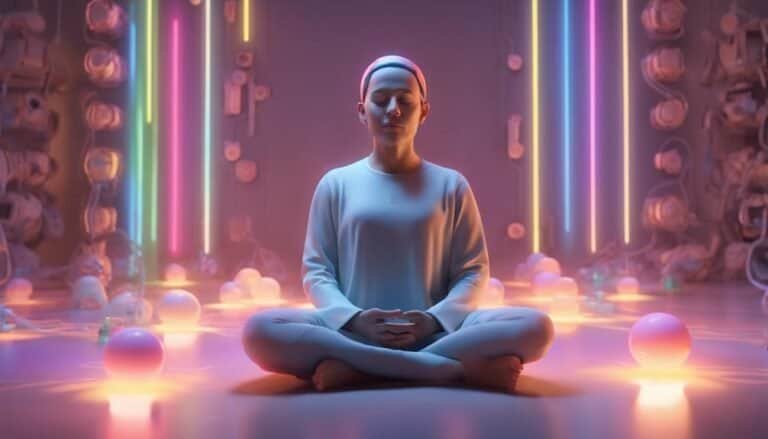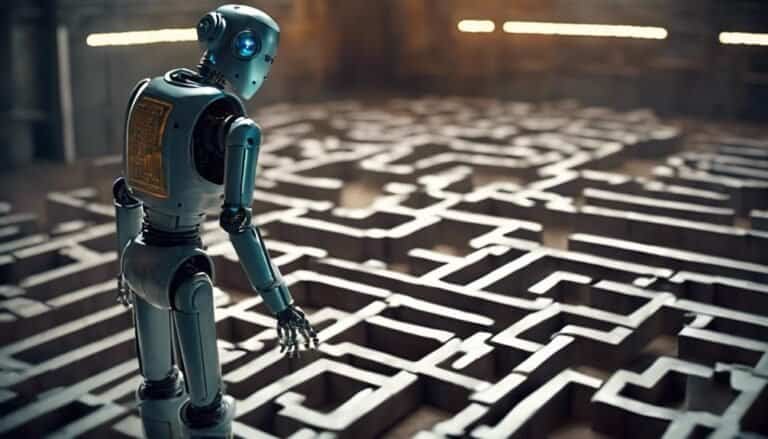AI and the Transformation of the Creative Industries: A Comprehensive Overview
In a world where technology continues to shape and redefine various sectors, the intersection of AI and the creative industries emerges as a pivotal point of exploration. As you navigate through the realms of music composition, film production, graphic design, and more, you will unravel the intricate ways in which artificial intelligence is revolutionizing traditional processes.
Stay tuned to uncover how AI's influence is not just augmenting but fundamentally reshaping the landscape of creativity and innovation in ways that might surprise you.
Key Takeaways
- AI revolutionizes creative processes across music, film, design, and writing.
- Automated marketing strategies enhance targeting and optimize campaign effectiveness.
- Visual and interactive technologies benefit from AI for personalized experiences.
- AI's role in aesthetic analysis transforms art critique and recommendation systems.
AI in Music Composition
AI algorithms in music composition have revolutionized the creative process by providing composers with innovative tools and inspiration. Through AI-generated melodies, composers can explore a vast array of musical possibilities that may have been otherwise undiscovered. These AI systems analyze vast amounts of musical data to generate unique and compelling melodies that can spark creativity and serve as a foundation for musical compositions.
Moreover, AI has also been instrumental in advancing algorithmic harmonies. By leveraging complex algorithms, AI can assist composers in creating harmonies that complement melodies seamlessly. These algorithmic harmonies can help composers experiment with different chord progressions, voicings, and tonalities, leading to the development of rich and diverse musical arrangements.
AI in Film Production
Exploring the intersection of artificial intelligence and visual storytelling, the application of AI in film production has reshaped the creative landscape by revolutionizing various aspects of the cinematic process. AI-driven visual effects have enabled filmmakers to create stunning visuals that were previously either too costly or technically challenging. Automated script analysis tools help analyze scripts for elements like plot structure, character development, and even predict potential audience reactions, providing valuable insights to filmmakers.
AI-driven visual effects open up possibilities for creating breathtaking cinematic experiences.
Automated script analysis tools offer filmmakers valuable insights for enhancing their storytelling.
AI algorithms streamline various production tasks, enhancing efficiency and decision-making in film production.
AI in Graphic Design
The integration of artificial intelligence technologies in graphic design processes has significantly transformed the way visual content is conceptualized and created. AI-generated graphics and automated design processes have revolutionized the efficiency and creativity in the field of graphic design. AI algorithms can analyze large datasets to predict design trends, suggest color schemes, and even generate design variations based on user preferences.
| Advantages of AI in Graphic Design | |
|---|---|
| 1. Speed | AI accelerates design processes. |
| 2. Consistency | Ensures uniformity in designs. |
| 3. Creativity | Inspires unique design solutions. |
These AI-powered tools enable designers to focus more on the conceptual and strategic aspects of their work rather than repetitive tasks. By streamlining workflows and providing intelligent insights, AI in graphic design enhances productivity and enables professionals to produce high-quality designs efficiently. Embracing AI in graphic design can lead to innovative visual outcomes and push the boundaries of creativity.
AI in Advertising
Revolutionizing the dynamics of marketing strategies, artificial intelligence has made significant strides in reshaping the landscape of advertising. AI-powered consumer targeting allows advertisers to reach specific audiences with personalized content, enhancing the effectiveness of campaigns. Automated ad creation streamlines the process of generating advertisements, saving time and resources while ensuring a consistent brand message across various platforms.
AI in advertising offers unparalleled capabilities to analyze vast amounts of data in real-time, enabling advertisers to make data-driven decisions swiftly. By leveraging AI algorithms, companies can optimize their ad placements for better visibility and engagement. Additionally, AI can enhance the efficiency of A/B testing, helping advertisers understand what resonates best with their target audience.
AI in Fashion Design
Amidst the intersection of technology and creativity, AI has been increasingly integrated into the realm of fashion design, augmenting traditional processes and opening up new possibilities for innovation.
AI-driven fashion trends are now shaping the industry, with algorithms analyzing vast amounts of data to predict upcoming styles and consumer preferences. This predictive capability allows designers to create collections that are more in tune with market demands, reducing the risk of producing unpopular or unsellable items.
Virtual fashion assistants powered by AI are also revolutionizing the design process. These assistants can generate design ideas, provide instant feedback on prototypes, and even assist in virtual fittings. By streamlining tasks that were once time-consuming, virtual fashion assistants help designers focus more on the creative aspects of their work, ultimately increasing productivity and efficiency.
AI in Writing and Content Creation
In the realm of writing and content creation, AI technologies are significantly reshaping traditional processes and enhancing efficiency through automated tools and algorithms. AI in writing isn't just about grammar and spell checks; it delves into more creative aspects like AI-generated poetry and creative writing, revolutionizing how content is produced.
Some key areas where AI is making a mark include:
- AI Generated Poetry: AI algorithms can now create poetry that mimics human emotions and styles, blurring the lines between human and AI creativity.
- Creative Writing Assistance: AI tools aid writers in generating ideas, improving structure, and suggesting enhancements to produce compelling content efficiently.
- Content Automation and Storytelling Algorithms: AI streamlines content creation by automating repetitive tasks, enabling writers to focus more on ideation and storytelling, leading to richer and more engaging narratives.
The integration of AI in writing and content creation not only boosts productivity but also opens up new possibilities for innovative and impactful storytelling in the digital age.
AI in Photography
AI in Photography has revolutionized image editing through automation, allowing for efficient retouching and enhancement of photographs.
Facial recognition technology integrated into photography AI systems enables quick and accurate tagging of individuals in large photo databases.
Additionally, the development of creative filters driven by AI algorithms has provided photographers with innovative tools to enhance and stylize their images.
Image Editing Automation
The integration of artificial intelligence into photography has revolutionized image editing processes, streamlining tasks and enhancing efficiency. Automated retouching and the application of smart filters are now more precise and quicker than ever before. Here's how AI is transforming image editing in photography:
- Automated retouching: AI algorithms can automatically detect and correct imperfections in images, such as blemishes or red-eye, saving you time during the editing process.
- Smart filters: By analyzing the content of an image, AI-powered smart filters can suggest the most suitable enhancements, like adjusting the contrast or color balance, based on the specific characteristics of the photo.
- Efficiency boost: AI streamlines the editing workflow, allowing photographers to focus more on creativity and less on mundane editing tasks.
Facial Recognition Technology
Facial recognition technology in photography leverages advanced AI algorithms to automatically identify and analyze human faces within images, revolutionizing the way portraits are captured and processed. This technology enables photographers to efficiently organize and sort large photo collections based on individuals present in the images. Besides, it facilitates the application of facial expression analysis, allowing for a deeper understanding of the emotional context within the photographs. However, concerns regarding facial recognition ethics have emerged, raising issues related to privacy, consent, and potential misuse of personal data. By integrating facial recognition capabilities into photography workflows, professionals can streamline the editing process and enhance the overall quality of portraits.
| Advantages | Disadvantages | Use Cases | Future Developments |
|---|---|---|---|
| Efficient sorting of photos | Privacy concerns | Emotion recognition | Improved accuracy |
| Enhanced editing processes | Misidentification risks | Security applications | Enhanced privacy features |
| Personalized recommendations | Regulatory challenges | Augmented reality | Ethical guidelines |
Creative Filters Development
In the realm of photography, the evolution of creative filters through the integration of advanced AI technologies has revolutionized the way visual effects are applied to images. AI-driven creative filter applications now offer unparalleled possibilities for enhancing and transforming photographs in ways previously unimaginable. With the advent of AI in photography, users can now delve into a realm of endless creativity and innovation.
Some key features include:
- Creative filter applications: AI enables the development of sophisticated filters that can dramatically alter the mood and tone of images.
- Filter customization options: Users can now fine-tune and personalize filters to suit their specific preferences and artistic vision.
- Real-time previews: AI technology allows for instant previews of different filter effects, streamlining the editing process.
AI in Virtual Reality (VR) and Augmented Reality (AR)
AI technology is revolutionizing VR and AR by enhancing various aspects of these immersive experiences.
VR content creation is being streamlined and enriched through AI algorithms that assist in generating realistic environments.
AR interactive experiences are becoming more engaging and interactive, thanks to AI's ability to overlay digital information seamlessly onto the physical world.
VR Content Creation
Exploring the intersection of artificial intelligence (AI) and virtual reality (VR) in content creation reveals a landscape ripe with innovation and transformative potential. When delving into VR content creation, consider the following:
- Virtual Reality Storytelling: AI algorithms can enhance narrative structures, creating more immersive and engaging experiences for users.
- Immersive Experiences: Through AI-driven data analysis, personalized content can be tailored to individual users, enhancing immersion and interaction.
- VR Content Distribution: AI can optimize content delivery, ensuring that the right content reaches the right audience at the right time, maximizing engagement and impact.
Incorporating AI into VR content creation not only revolutionizes storytelling but also revolutionizes how audiences engage with and experience virtual realms.
AR Interactive Experiences
When considering the evolution from VR content creation to AR interactive experiences, the integration of AI technologies opens up new dimensions of user engagement and interaction in immersive environments.
Interactive storytelling in AR allows for personalized narratives that respond to user actions, enhancing the overall experience. AI-powered installations in AR enable dynamic content generation based on user behavior, making each interaction unique and engaging.
Augmented reality art benefits from AI algorithms that can analyze user preferences and adapt visual elements in real-time, creating a more personalized and interactive artistic experience.
These advancements in AI within AR not only push the boundaries of creativity but also revolutionize how users interact with virtual elements in the physical world, shaping the future of immersive experiences.
AI-enhanced Immersive Environments
Immersive environments in Virtual Reality (VR) and Augmented Reality (AR) are undergoing a profound transformation with the integration of AI technologies, enhancing user experiences through dynamic interactions and personalized content generation. AI algorithms play a pivotal role in shaping virtual worlds, making them more interactive and responsive to user input. The fusion of AI and VR/AR technologies is revolutionizing how individuals engage with digital content, creating hyper-realistic simulations that blur the line between the physical and virtual realms.
- AI algorithms enhance user interactions in virtual environments.
- Personalized content generation tailored to individual preferences.
- Real-time adaptation based on user behavior, ensuring dynamic and engaging experiences.
AI in User Experience (UX) Design
AI technology is revolutionizing the field of User Experience (UX) design by enhancing user interactions and streamlining design processes. In website optimization, AI algorithms analyze user behavior to suggest personalized content, layout adjustments, or navigation enhancements that cater to individual preferences. Similarly, in app design, AI can identify patterns in user interactions to optimize the user interface, making it more intuitive and user-friendly.
| AI in Website Optimization | AI in App Design |
|---|---|
| Personalized Content Recommendations | User Interface Optimization |
| Layout Adjustments based on User Behavior | Pattern Recognition for Enhanced UX |
| Navigation Enhancements | Intuitive Design Improvements |
| User Behavior Analysis | User Interaction Pattern Identification |
| Individual Preference Catering | User-Friendly Interface Enhancements |
These AI applications not only improve user satisfaction but also increase engagement and conversion rates. By leveraging AI in UX design, companies can create more efficient and tailored digital experiences for their users, ultimately driving business success.
AI in Art Curation and Critique
AI plays a pivotal role in art curation by utilizing algorithms to suggest artworks based on users' preferences and behaviors. Additionally, AI contributes to aesthetic evaluation by analyzing visual elements, composition, and historical significance in artworks.
These advancements in AI technology are reshaping how art is curated, critiqued, and appreciated in the digital age.
AI in Artwork Selection
In the realm of art curation and critique, technological advancements have revolutionized the process of selecting and evaluating artworks through the application of sophisticated algorithms.
- AI Driven Artwork Curation
- Utilizes machine learning algorithms to analyze vast collections of artwork.
- Machine Learning in Art Selection
- Algorithms learn from patterns in art data to suggest pieces based on style, artist, or theme.
- Enhanced Efficiency
- Reduces manual labor by automating the selection process, enabling faster curation and broader art exposure.
These AI-driven systems enable art institutions and collectors to streamline the curation process, discover new talent, and provide a more diverse range of art to audiences worldwide.
AI for Aesthetic Evaluation
With the integration of advanced algorithms, the evaluation of aesthetics in art curation and critique has been significantly enhanced. AI plays a crucial role in aesthetic analysis by providing insights into design evaluation that may not be immediately apparent to the human eye.
Through machine learning techniques, AI can analyze elements such as color theory, composition, and visual balance to assess the overall aesthetic quality of artworks. By automating this process, AI can assist art curators and critics in making informed decisions about which pieces to showcase or discuss.
Additionally, AI algorithms can identify patterns in artistic styles or themes, helping to categorize and recommend artworks based on their aesthetic attributes. This application of AI in aesthetic evaluation is revolutionizing the way art is curated and critiqued.
Conclusion
In conclusion, AI has revolutionized the creative industries, reshaping the way music is composed, films are produced, designs are created, and experiences are curated. With its innovative capabilities, AI has become an indispensable tool for artists and creators, enhancing their work in ways never imagined before.
Like a symphony conductor guiding a masterpiece, AI orchestrates a harmonious blend of technology and creativity, paving the way for a new era of limitless possibilities in the creative world.


